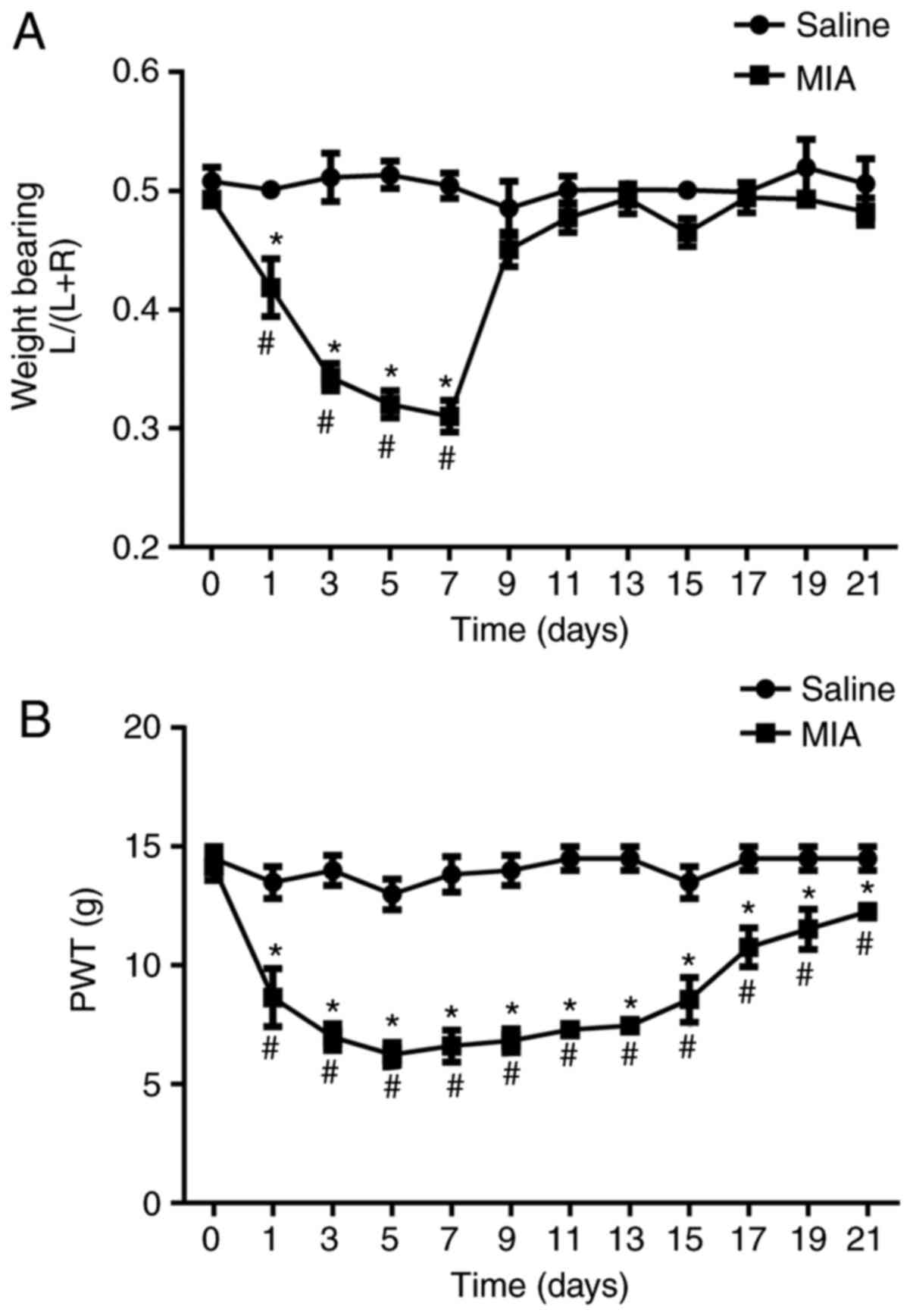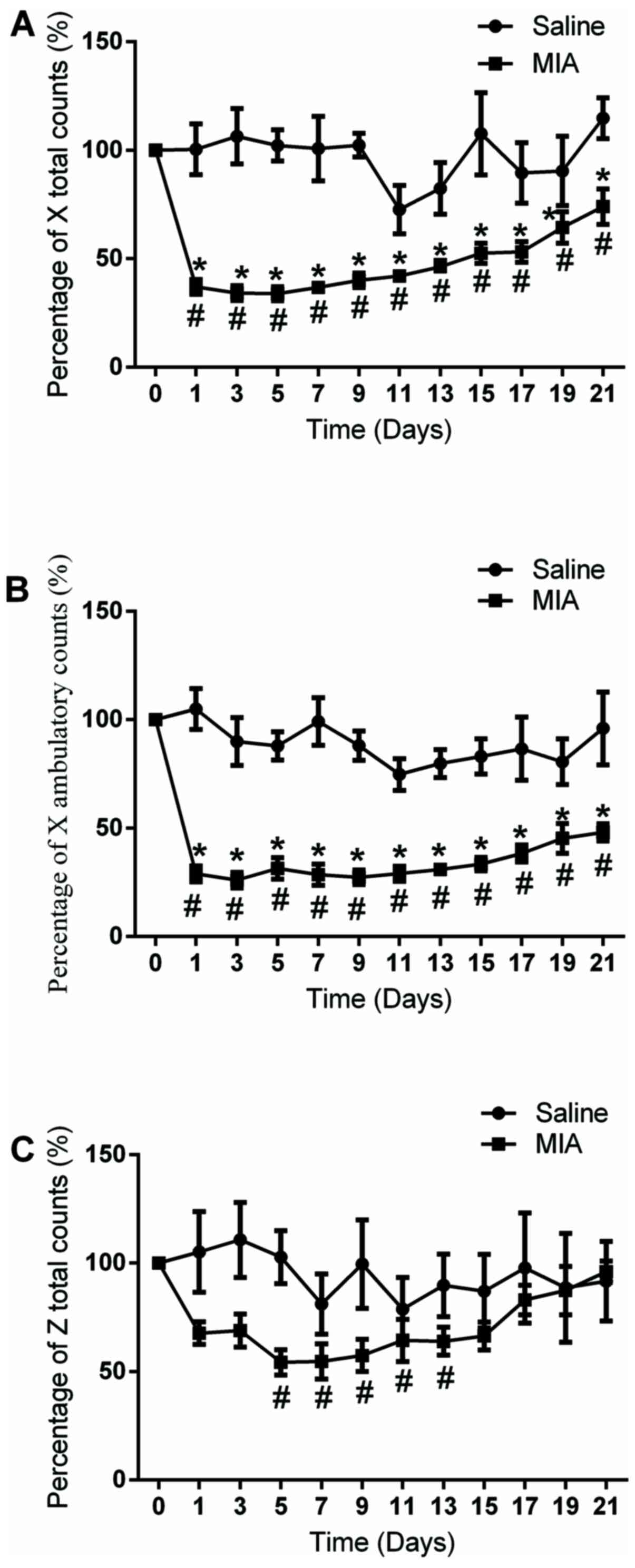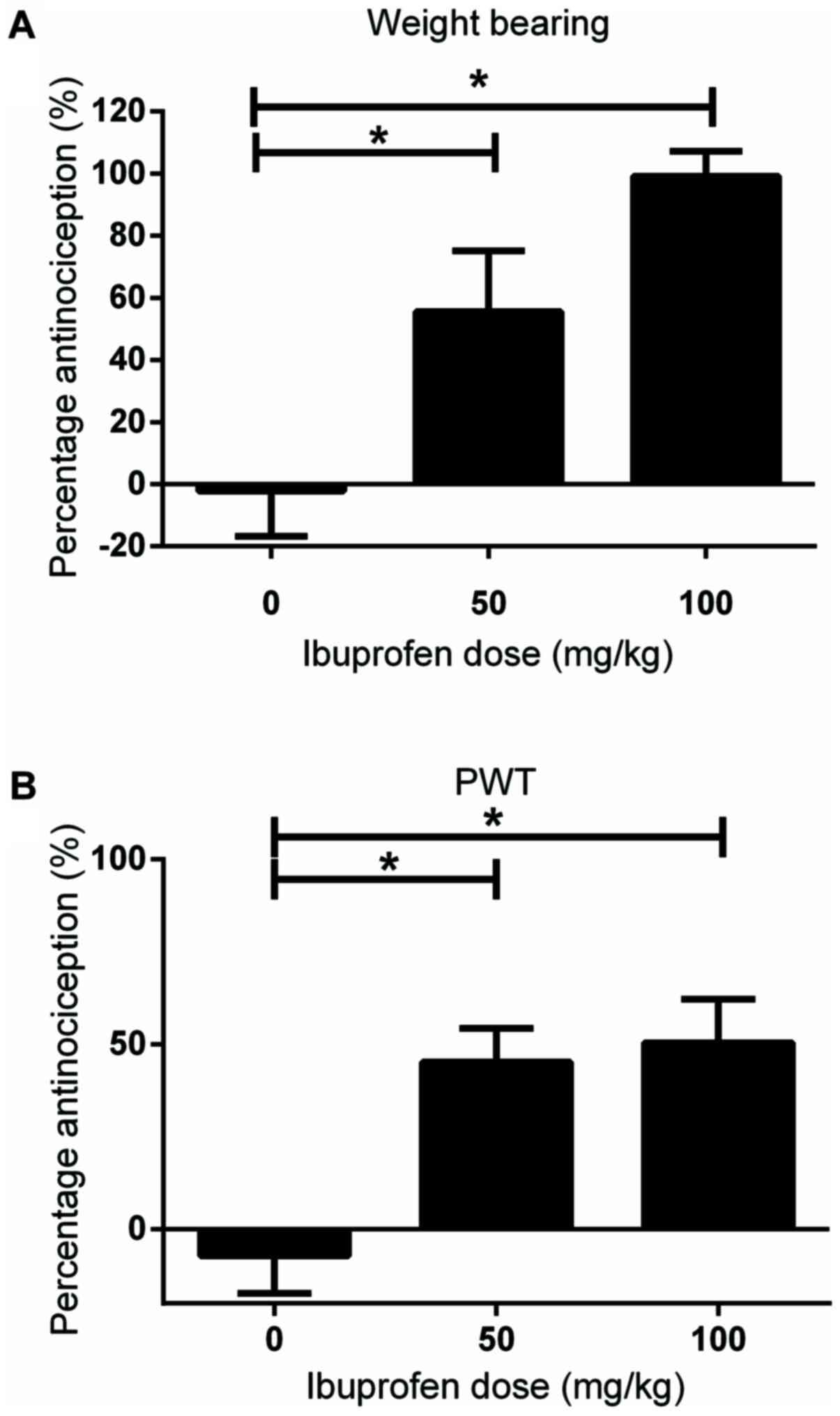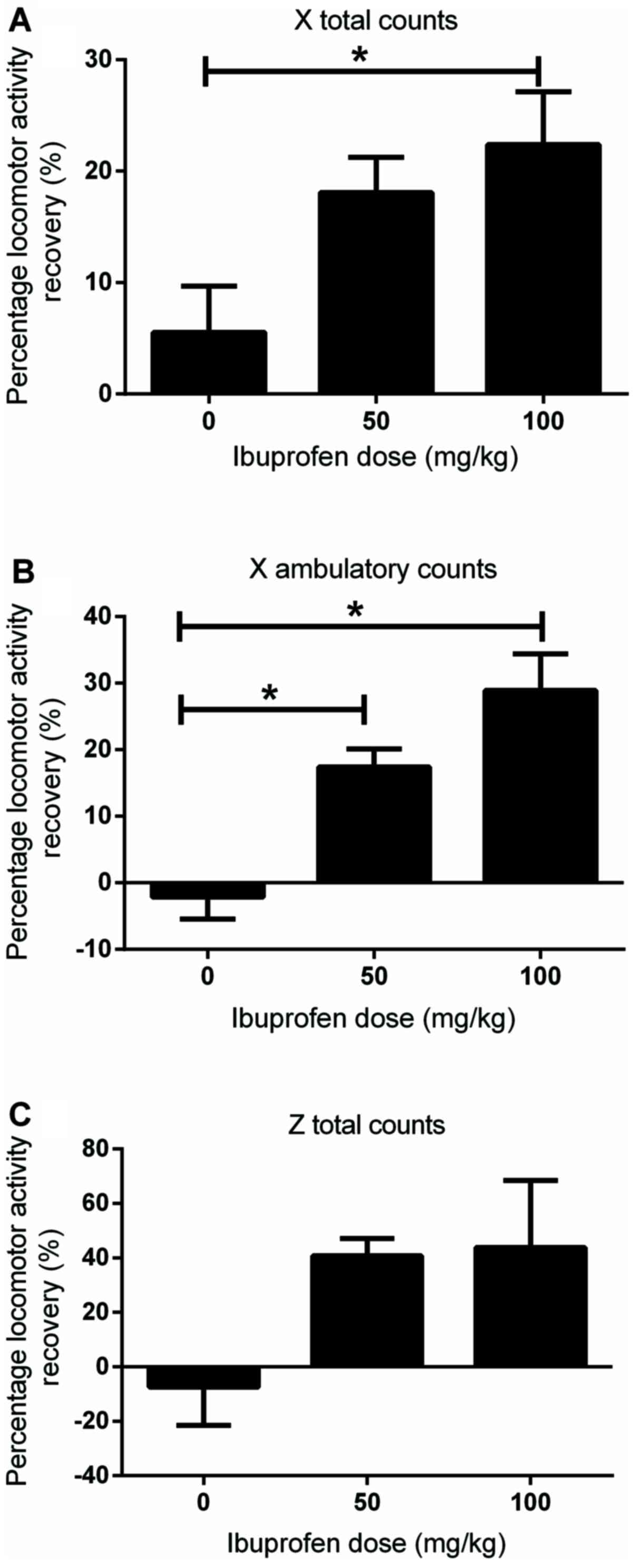|
1
|
Chard JA, Tallon D and Dieppe PA:
Epidemiology of research into interventions for the treatment of
osteoarthritis of the knee joint. Ann Rheum Dis. 59:414–418.
2000.PubMed/NCBI View Article : Google Scholar
|
|
2
|
O'Neill TW, McCabe PS and McBeth J: Update
on the epidemiology, risk factors and disease outcomes of
osteoarthritis. Best Pract Res Clin Rheumatol. 32:312–326.
2018.PubMed/NCBI View Article : Google Scholar
|
|
3
|
Schaible HG: Osteoarthritis pain Recent
advances and controversies. Curr Opin Support Palliat Care.
12:148–153. 2018.PubMed/NCBI View Article : Google Scholar
|
|
4
|
Fu K, Robbins SR and McDougall JJ:
Osteoarthritis: The genesis of pain. Rheumatology (Oxford). 57
(Suppl 4):iv43–iv50. 2018.PubMed/NCBI View Article : Google Scholar
|
|
5
|
Malfait AM and Little CB: On the
predictive utility of animal models of osteoarthritis. Arthritis
Res Ther. 17(225)2015.PubMed/NCBI View Article : Google Scholar
|
|
6
|
Kuyinu EL, Narayanan G, Nair LS and
Laurencin CT: Animal models of osteoarthritis: Classification,
update, and measurement of outcomes. J Orthop Surg Res.
11(19)2016.PubMed/NCBI View Article : Google Scholar
|
|
7
|
Negus SS, Vanderah TW, Brandt MR, Bilsky
EJ, Becerra L and Borsook D: Preclinical assessment of candidate
analgesic drugs: Recent advances and future challenges. J Pharmacol
Exp Ther. 319:507–514. 2006.PubMed/NCBI View Article : Google Scholar
|
|
8
|
Malfait AM, Little CB and McDougall JJ: A
commentary on modelling osteoarthritis pain in small animals.
Osteoarthritis Cartilage. 21:1316–1326. 2013.PubMed/NCBI View Article : Google Scholar
|
|
9
|
Cobos EJ and Portillo-Salido E:
‘Bedside-to-Bench’ behavioral outcomes in animal models of pain:
Beyond the evaluation of reflexes. Curr Neuropharmacol. 11:560–591.
2013.PubMed/NCBI View Article : Google Scholar
|
|
10
|
Berge OG: Predictive validity of
behavioural animal models for chronic pain. Br J Pharmacol.
164:1195–1206. 2011.PubMed/NCBI View Article : Google Scholar
|
|
11
|
Matson DJ, Broom DC and Cortright DN:
Locomotor activity in a novel environment as a test of inflammatory
pain in rats. Methods Mol Biol. 617:67–78. 2010.PubMed/NCBI View Article : Google Scholar
|
|
12
|
Niikura K, Takahashi Y, Iino M, Funatsu Y
and Matsuda R: An automated method by which effects of compounds on
locomotor activity and spontaneous neuropathic pain-specific
movements can be simultaneously evaluated in rats with
chronic-constriction nerve injury. Eur J Pharm Sci. 96:551–559.
2017.PubMed/NCBI View Article : Google Scholar
|
|
13
|
Tannenbaum J: Ethics and pain research in
animals. ILAR J. 40:97–110. 1999.
|
|
14
|
Ma Y, Guo H, Bai F, Zhang M, Yang L, Deng
J and Xiong L: A rat model of knee osteoarthritis suitable for
electroacupuncture study. Exp Anim. 67:271–280. 2018.PubMed/NCBI View Article : Google Scholar
|
|
15
|
Bove SE, Calcaterra SL, Brooker RM, Huber
CM, Guzman RE, Juneau PL, Schrier DJ and Kilgore KS: Weight bearing
as a measure of disease progression and efficacy of
anti-inflammatory compounds in a model of monosodium
iodoacetate-induced osteoarthritis. Osteoarthritis Cartilage.
11:821–830. 2003.PubMed/NCBI View Article : Google Scholar
|
|
16
|
Chaplan SR, Bach FW, Pogrel JW, Chung JM
and Yaksh TL: Quantitative assessment of tactile allodynia in the
rat paw. J Neurosci Methods. 53:55–63. 1994.PubMed/NCBI View Article : Google Scholar
|
|
17
|
Alsalem M, Altarifi A, heba K, Heba AZ,
Belal A and El-Salem K: Role of PPARα and PPARγ in mediating the
analgesic properties of Ibuprofen in vivo and the effects of dual
PPARα/γ activation in inflammatory pain model in the rat. Int J
Pharmacol. 12(8)2016.
|
|
18
|
Alsalem M, Haddad M, Aldossary SA,
Kalbouneh H, Altarifi A, Jaffal SM, Abbas MA, Aldaoud N and
El-Salem K: Role of cannabinoid receptor 1 and the peroxisome
proliferator-activated receptor α in mediating anti-nociceptive
effects of synthetic cannabinoids and a cannabinoid-like compound.
Inflammopharmacology. 27:1131–1142. 2019.PubMed/NCBI View Article : Google Scholar
|
|
19
|
Rorabaugh BR, Rose MJ, Stoops TS, Stevens
AA, Seeley SL and D'Souza MS: Regulators of G-protein signaling 2
and 4 differentially regulate cocaine-induced rewarding effects.
Physiol Behav. 195:9–19. 2018.PubMed/NCBI View Article : Google Scholar
|
|
20
|
More AS, Kumari RR, Gupta G, Lingaraju MC,
Balaganur V, Pathak NN, Kumar D, Kumar D, Sharma AK and Tandan SK:
Effect of iNOS inhibitor S-methylisothiourea in monosodium
iodoacetate-induced osteoathritic pain: Implication for
osteoarthritis therapy. Pharmacol Biochem Behav. 103:764–772.
2013.PubMed/NCBI View Article : Google Scholar
|
|
21
|
Kobayashi K, Imaizumi R, Sumichika H,
Tanaka H, Goda M, Fukunari A and Komatsu H: Sodium
iodoacetate-induced experimental osteoarthritis and associated pain
model in rats. J Vet Med Sci. 65:1195–1199. 2003.PubMed/NCBI View Article : Google Scholar
|
|
22
|
Fernihough J, Gentry C, Malcangio M, Fox
A, Rediske J, Pellas T, Kidd B, Bevan S and Winter J: Pain related
behaviour in two models of osteoarthritis in the rat knee. Pain.
112:83–93. 2004.PubMed/NCBI View Article : Google Scholar
|
|
23
|
de Sousa Valente J: The pharmacology of
pain associated with the monoiodoacetate model of osteoarthritis.
Front Pharmacol. 10(974)2019.PubMed/NCBI View Article : Google Scholar
|
|
24
|
Stevenson GW, Mercer H, Cormier J, Dunbar
C, Benoit L, Adams C, Jezierski J, Luginbuhl A and Bilsky EJ:
Monosodium iodoacetate-induced osteoarthritis produces
pain-depressed wheel running in rats: Implications for preclinical
behavioral assessment of chronic pain. Pharmacol Biochem Behav.
98:35–42. 2011.PubMed/NCBI View Article : Google Scholar
|
|
25
|
Orita S, Ishikawa T, Miyagi M, Ochia N,
Inoue G, Eguchi Y, Kamoda H, Arai G, Toyone T, Aoki Y, et al:
Pain-related sensory innervation in monoiodoacetate-induced
osteoarthritis in rat knees that gradually develops neuronal injury
in addition to inflammatory pain. BMC Musculoskelet Disord.
12(134)2011.PubMed/NCBI View Article : Google Scholar
|
|
26
|
Muley MM, Krustev E and McDougall JJ:
Preclinical assessment of inflammatory pain. CNS Neurosci Ther.
22:88–101. 2016.PubMed/NCBI View Article : Google Scholar
|
|
27
|
Bryden LA, Nicholson JR, Doods H and
Pekcec A: Deficits in spontaneous burrowing behavior in the rat
bilateral monosodium iodoacetate model of osteoarthritis: An
objective measure of pain-related behavior and analgesic efficacy.
Osteoarthr Cartil. 23:1605–1612. 2015.PubMed/NCBI View Article : Google Scholar
|
|
28
|
Fraser LM, Brown RE, Hussin A, Fontana M,
Whittaker A, O'Leary TP, Lederle L, Holmes A and Ramos A: Measuring
anxiety- and locomotion-related behaviours in mice: A new way of
using old tests. Psychopharmacology (Berl). 211:99–112.
2010.PubMed/NCBI View Article : Google Scholar
|
|
29
|
Kandasamy R, Calsbeek JJ and Morgan MM:
Home cage wheel running is an objective and clinically relevant
method to assess inflammatory pain in male and female rats. J
Neurosci Methods. 263:115–122. 2016.PubMed/NCBI View Article : Google Scholar
|
|
30
|
Cobos EJ, Ghasemlou N, Araldi D, Segal D,
Duong K and Woolf CJ: Inflammation-induced decrease in voluntary
wheel running in mice: A nonreflexive test for evaluating
inflammatory pain and analgesia. Pain. 153:876–884. 2012.PubMed/NCBI View Article : Google Scholar
|
|
31
|
Kandasamy R, Calsbeek JJ and Morgan MM:
Analysis of inflammation-induced depression of home cage wheel
running in rats reveals the difference between opioid
antinociception and restoration of function. Behav Brain Res.
317:502–507. 2017.PubMed/NCBI View Article : Google Scholar
|
|
32
|
Grace PM, Strand KA, Maier SF and Watkins
LR: Suppression of voluntary wheel running in rats is dependent on
the site of inflammation: Evidence for voluntary running as a
measure of hind paw-evoked pain. J Pain. 15:121–128.
2014.PubMed/NCBI View Article : Google Scholar
|
|
33
|
Vonsy JL, Ghandehari J and Dickenson AH:
Differential analgesic effects of morphine and gabapentin on
behavioural measures of pain and disability in a model of
osteoarthritis pain in rats. Eur J Pain. 13:786–793.
2009.PubMed/NCBI View Article : Google Scholar
|
|
34
|
Altarifi A, Alsalem M and Mustafa A:
Effects of intraplantar administration of Complete Freund's
Adjuvant (CFA) on rotarod performance in mice. Scand J Pain: Jul 2,
2019 (Epub ahead of print).
|
|
35
|
Bonfa L, Vinagre RC and de Figueiredo NV:
Cannabinoids in chronic pain and palliative care. Rev Bras
Anestesiol. 58:267–279. 2008.PubMed/NCBI View Article : Google Scholar
|


















